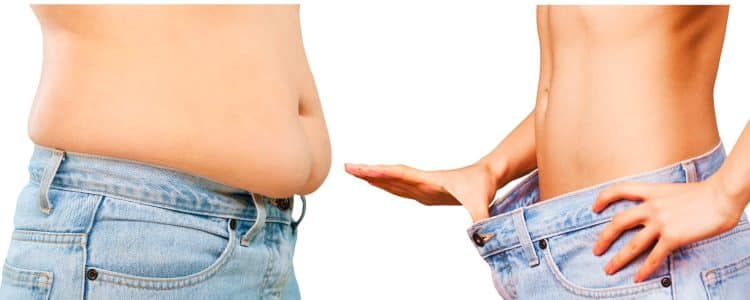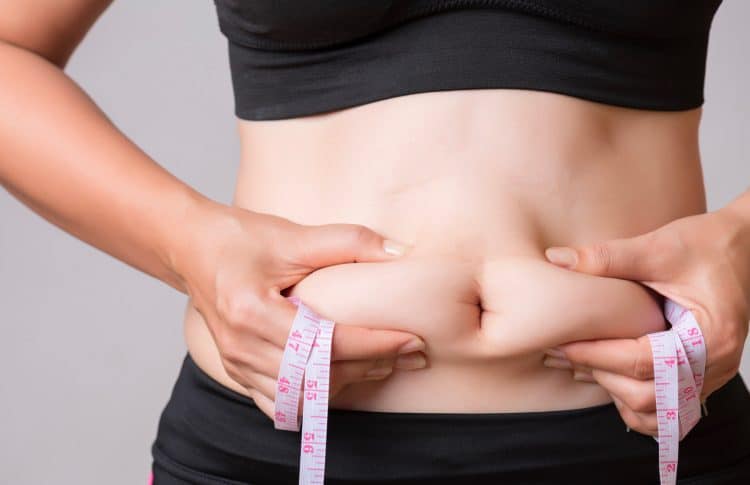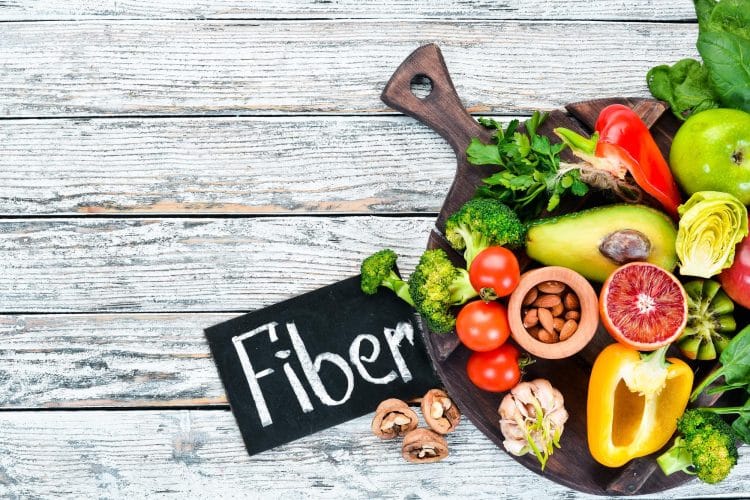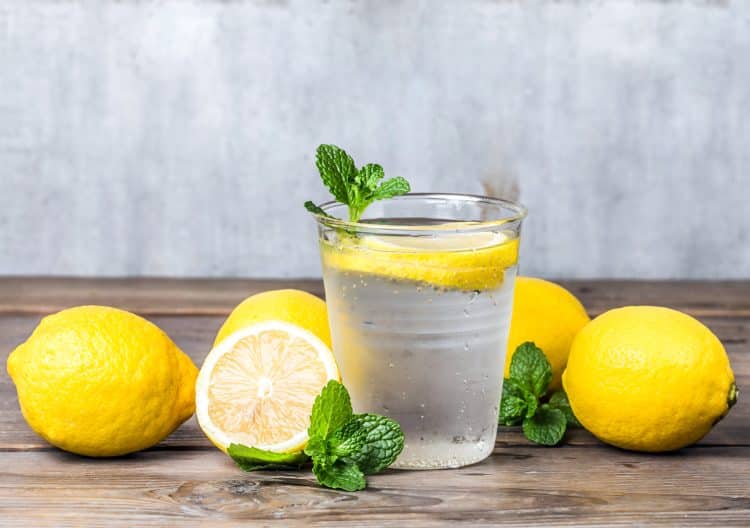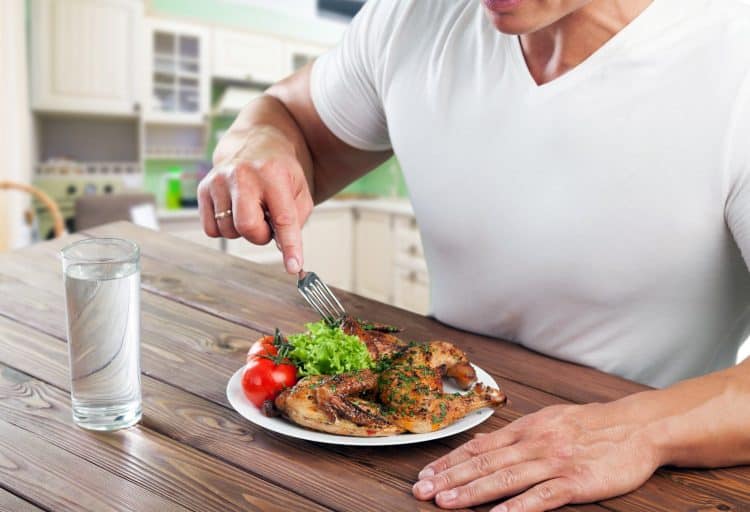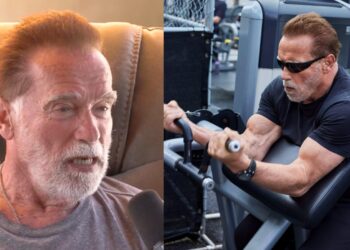Once you pass your fifth decade, challenges like building muscle and maintaining a healthy body weight intensify due to a slowing metabolism, declining testosterone levels, and natural muscle loss. So, what’s the solution? After 50, a smarter approach to training is crucial.
This article, authored by Steve Theunissen, a seasoned personal trainer with 35 years of experience and multiple certifications, and updated by Tom Miller, CSCS, outlines the best exercises to lose belly fat post-50 and offers dietary advice for effective weight loss.
Let’s explore how you can overcome these age-related fitness hurdles.
Importance of Losing Belly Fat Over 50
There are two types of fat in your body, subcutaneous and visceral. The fat that is beneath your skin is referred to as subcutaneous fat. This type of fat may be easily grabbed by hand and gathered in the usual “problem areas,” including the thighs, hips, neck, and arms. It accounts for around 80% to 90% of our total body fat.
The remaining 10 to 20 percent is called visceral fat and is found around the liver, spleen, intestines, kidneys, and other internal organs, as well as beneath the stomach muscles. It sometimes goes by “deep fat” since it covers your internal organs and fills the spaces between your stomach, intestines, liver, and other organs. [1]
Level Up Your Fitness: Join our 💪 strong community in Fitness Volt Newsletter. Get daily inspiration, expert-backed workouts, nutrition tips, the latest in strength sports, and the support you need to reach your goals. Subscribe for free!
Subcutaneous fat differs from belly fat, which is far more hazardous because it increases the risk of type 2 diabetes, cardiovascular disease, and inflammatory disorders. Belly fat forces the abdominal muscles outward because it is harder than subcutaneous fat.
These deep abdominal fat cells transfer their free fatty acids directly to the liver rather than releasing them into the bloodstream. Triglycerides and cholesterol are other types of fat that the liver creates in reaction and release into the bloodstream. Free fatty acids are the types of fat that are released from fat cells and carried into the blood, whereas triglycerides are another type of blood-borne fat that the body uses as an energy source. Increased risk of cardiovascular disease is linked to high cholesterol and triglyceride levels.
Challenges of Losing Belly Fat Over 50
Once past 50, you will find it increasingly difficult to keep your belly fat down to healthy levels. It’s not that your willpower to resist tempting foods is lower. Here are four physiological reasons you’re more prone to putting on belly fat over 50:
1. Reduced Metabolism
At around 30, most people’s metabolisms decline by about 1% every two years. Although the exact cause of our aging metabolism is unknown, it most likely involves a decline in muscle mass and a shift in hormone levels. Men produce less testosterone, while women’s estrogen levels decrease after menopause. [2]
2. Less Muscle
Age-related muscle loss, or sarcopenia, kicks in from about the age of 40. Because muscle is more active metabolically than fat, having less of it negatively affects our metabolic rate. As a result, you won’t burn as many calories at rest, making it easier for that spare tire to develop around your belly. [3]
3. Lifestyle
Most people tend to slow down as they age. By the time they reach their 50s, most folks stop playing sports, no longer play with the kids, and spend more time on the couch. That means fewer calories burned throughout the day.
4. Stress
When we experience chronic stress, our cortisol levels increase dramatically. This can indirectly contribute to higher levels of belly fat. As we get older, our stress levels can increase due to many factors, including work stressors, financial problems, and the concerns of looking after elderly parents.
Cortisol can increase the desire for comfort foods with high caloric content, particularly those high in carbohydrates and fats. These are the very foods that contribute to increases in belly fat.
Cortisol encourages fat storage, particularly visceral fat, which builds up around the abdominal organs. In fact, the hormone can actually redistribute subcutaneous fat to visceral fat.
Cortisol also has a catabolic effect on muscle tissue, causing a breakdown of amino acids. This can contribute to age-related muscle loss. [4]
15 Diet & Nutrition Tips To Lose Belly Fat Loss Over 50
As we’ve learned, excess belly fat is aesthetically unpleasing and dangerous. It puts you at a higher risk of cancer, coronary heart disease, type 2 diabetes, arthritis, and depression. Fortunately, it is possible to reduce your belly fat levels dramatically.
Here are 15 diet and nutrition tips that will complement your exercise-based efforts to reduce the spare tire:
1. Increase Your Fiber Intake
You can shed belly fat by increasing the amount of soluble fiber in your diet. This is because fiber will assist in lowering your blood sugar levels. You’ll experience stable insulin levels as a result.
Fiber, which is incredibly filling, also serves as the body’s natural cleaner. It enhances digestion and improves waste excretion. A 2011 study found that a 10-gram increase in soluble fiber consumption over a five-year period reduced belly fat accumulation by 3.7%. [5]
The best sources of fibrous carbs are brightly colored vegetables and berries, including strawberries, blueberries, blackberries, beans, lentils, and other legumes.
2. Reduce Your Alcohol Intake
Unsurprisingly, overindulging in alcohol can lead to a ‘beer gut.’ In fact, if you are trying to reduce your belly fat, alcohol will be one of your worst enemies. Alcohol contains zero proteins, carbohydrates, or fats. In other words, it has no nutritional benefit whatsoever, and every gram of alcohol adds seven calories to your system.
After you drink alcohol, your body prioritizes metabolizing it. That means your body will first burn alcohol instead of fat, postponing your ability to burn off the spare tire.
Alcohol puts almost twice as many calories per gram into your body than carbs and protein (seven versus four). And those calories are much easier to consume than the solid foods we eat to get macronutrients into our system. As a result, it is extremely easy to take in hundreds, even thousands, of zero-nutrition calories from alcohol in an evening.
Alcohol slows down the central nervous system and lowers inhibitions. One of the effects of this is that people eat more when they are drinking. And the foods that are normally consumed on these occasions are those that are high in simple carbs. All of this is a sure-fire recipe for fat gain.
Alcohol hurts food digestion, leading to reduced efficiency in breaking down fats for fuel, impeding the weight loss process.
Alcohol has a negative effect on testosterone production. Testosterone is an important hormone for fat loss, so its alcohol-induced lowered release will directly impact fat-burning ability.
The bottom line here is if you’re serious about getting rid of visceral body fat, you need to cut back on the booze. [6]
3. Consume More Omega-3 Fatty Acids
Your feelings, behavior, and physique aesthetics will change dramatically if you consume more omega-3 fatty acids, particularly while following a weight loss program.
Here’s what increasing your omega-3 intake will do for you:
- Boost your insulin sensitivity
- Aid with fat burning
- Boost your metabolism
- Reduce cortisol production and increase your energy
- Assist with muscle growth
The best sources of omega-3 fatty acids are eggs, fatty fish, chia seeds, walnuts, and flaxseeds. [7]
4. Eat More Monounsaturated Fats
Monounsaturated fats have the power to lower insulin and LDL cholesterol levels. Here are five excellent sources of monounsaturated fats:
- Olive
- Nuts
- Avocado
- Avocado Oil
- Coconut Oil
5. Eliminate Processed Grains
Processed grain products include cereal, bagels, pasta, bread, and bagels. The nutritional content of the grains is reduced while the calorie density is increased by milling, refining, and bleaching. That’s not a healthy combination.
Although whole grain types are preferable because they still contain some fiber and nutrients, even these are processed to some extent and may be high in calories.
However, you should only consume only whole grains going forward. That means avoiding products made from white pasta, rice, or flour. [8]
6. Prepare for Snack Time
A vital tactic for effective weight loss is predicting and planning when you’re likely to feel hungry throughout the day. When hunger strikes, having ready-to-eat, homemade snacks can come in handy.
Here are five tasty, straightforward snacks:
- Apple crisps
- Almonds
- A nutritious smoothie
- Hard-boiled eggs
- A can of water-packed tuna
7. Reduce Liquid Calorie Intake
Liquid calories have several significant issues. Refined sugars are frequently used in weight loss smoothies as flavoring. Others use preservatives to enhance flavor and mixability. Those who consume solid meals feel satiated longer than those who use meal-replacement beverages.
In a 2007 study, test subjects were given solid food and a meal replacement shake, and their degree of satiety was monitored over the next four hours.
The satiety levels were much higher in the solid food group. In fact, the meal replacement group’s body didn’t even recognize that they had eaten from a chemical standpoint. [9]
8. Increase Water Intake
Hydration is crucial to a successful weight-loss strategy. Water can also help increase metabolism. Participants in a study who drank 16 ounces of water daily experienced a 30% rise in their metabolism. [10]
Always keep a water bottle with you. To stay full, regularly sip from it. Drinking water will also assist you in satisfying your thirst so that you don’t confuse it with hunger.
9. Begin Meal Prepping
One of the keys to sticking to your smart eating plan is prepping your meals in advance. This involves keeping a couple of hours aside, usually on the weekend, to prepare your weekly meals.
This greatly eases your search for nutritious options that adhere to your macronutrient guidelines. Meal planning will also significantly reduce your likelihood of reverting to poor eating patterns.
10. Avoid Trans Fatty Acids
Unsaturated lipids become trans fatty acids when hydrogen is introduced. They have been demonstrated to increase belly fat in addition to being connected to heart disease and insulin resistance. According to one study, eating a lot of trans fats can increase belly fat by 33%. [11]
11. Do a 14-Day Detox
To get rid of toxins and other impurities in your body, try a 14-day detox. The doors of fat loss may effectively be flung open by this. It’s not necessary to starve during a cleanse. It involves giving your body the proper nutrients to remove toxins and restore its natural equilibrium.
12. Increase Coconut Oil Consumption
Recent years have seen a lot of research focused on the coconut. Many of these studies have focused on how they can aid in weight loss.
Coconut oil contains medium-chain fatty acids that do not circulate in the bloodstream like long-chain fatty acids. Instead, they are sent to the liver, which turns them into energy. As a result, your body turns to coconut oil for energy rather than storing the calories as fat.
According to some studies, switching from olive oil, which contains long-chain fatty acids, to coconut oil, which contains medium-chain fatty acids, results in greater fat reduction. Coconut oil is particularly helpful for decreasing weight around the abdomen, where visceral fat collects. Because it is linked to so many ailments, visceral fat is the most harmful type of fat.
In a recent study, one ounce of coconut oil was added to women’s diets with excessive abdominal fat. Both their waist circumference and their BMI significantly decreased after 12 weeks. This was accomplished without any exercise or other dietary changes. [12]
13. Add Herbs to your Meals
Several plants have been used by indigenous peoples worldwide for centuries to help with weight loss. In recent decades, science has confirmed the effectiveness of some of them. Here are three of the best:
- Turmeric
- Cumin
- Ashwagandha
14. Consume More Protein
Protein aids in fat loss in addition to helping you develop muscle. This is because protein has the strongest thermogenic effect of all the macronutrients, is very filling, and reduces hunger. As a result, it requires more energy to digest than fats or carbohydrates.
When paired with weight resistance exercise, protein’s ability to build muscle also aids in belly fat reduction. Maintaining muscle demands five times as many calories as maintaining body fat. Therefore, the more muscular you are, the leaner you will be!
Level Up Your Fitness: Join our 💪 strong community in Fitness Volt Newsletter. Get daily inspiration, expert-backed workouts, nutrition tips, the latest in strength sports, and the support you need to reach your goals. Subscribe for free!
Plan to consume one gram of protein per pound of body weight, with your preferred protein sources being eggs, chicken, fish, legumes, Greek yogurt, and cream cheese. [13]
Related: Try Our Protein Calculator
15. Cut Yourself Some Slack
It is important to be realistic when trying to lose belly fat. When you try to lead a healthy lifestyle, you’ll find yourself moving in the opposite direction from the vast majority of people. The environment you are in will constantly provide you with temptations. It’s ridiculous to expect yourself to never make a mistake. Remember that a poor eating decision won’t halt your progress.
The key takeaway is that you shouldn’t punish yourself if you make a poor nutritional choice or skip an exercise. Your ability to succeed depends on developing long-lasting habits that you can maintain. An occasional slip-up won’t hamper your results.
Best Exercises to Lose Belly Fat Over 50
Losing weight, and keeping it off, is all about consistency. Sticking to a balanced training and diet plan to create a calorie deficit will help you shed unwanted pounds effectively and sustain your weight loss progress over time.
The key to success is incorporating a sustainable exercise schedule into your lifestyle. Let’s find out how it should (and shouldn’t) be done.
How Not to Lose Belly Fat
Let’s get it straight from the outset, you will not lose belly fat by doing hundreds of sit-ups, crunches, leg raises, or other exercises for your abdominal muscles. The reason is simple; you cannot spot-reduce belly fat. In other words, doing a thousand crunches will not burn fat off your belly fat.
Fat comes off the body evenly. So, when you do a calorie-burning exercise, you cannot dictate what part of the body it will come from. Depending on your genetics, the fat might come off the belly and the sides of the waist (the dreaded love handles) last. When you build muscle, you will also increase your metabolism to burn more calories.
Exercise Type: Fast or Slow?
There is a lot of confusion about what type of cardiovascular exercise is best for weight loss. It boils down to two options — long and slow cardio or fast and short cardio. Both sides have their passionate advocates, yet the current scientific consensus is squarely on the side of fast, short, high-intensity sessions. High-intensity interval training (HIIT) involves quick bursts of high-intensity training followed by short rest periods.
The best HIIT exercises will allow you to use maximum exertion to burn maximum calories. Running is a great choice, allowing for hard-out sprints (imagine a Doberman is chasing you) followed by a slow jog. Incorporating HIIT training into your exercise schedule thrice weekly will help you burn calories while exercising and turn your body into a fat-burning furnace by boosting your metabolism for the next 24 hours. [14]
The best exercises to reduce belly fat for men are those that burn the most calories. Combine this with a healthy diet, and your belly girth will decrease. Here are the six effective belly fat exercises to reduce fat from your midline:
Treadmill
Exercising on a treadmill is the most popular form of cardio exercise in gyms worldwide. However, most people do not do it with enough intensity. Walking at 2 miles an hour while reading a book will not cut it. A far better way to go is HIIT. This involves interpreting short sprints with even shorter rest periods for multiple bouts.
Tabata is another effective form of HIIT workout for fat loss. It involves a slow two-minute warmup and a 20 seconds max speed sprint. You then throw your legs out to the side of the running belt for 10 seconds. That is one round. The workout involves performing eight rounds. It is extremely hard work but burns a ton of calories. Then, thanks to what is known as the enhanced post-exercise oxygen consumption (EPOC) effect, you will have an elevated metabolism for the next 24-36 hours!
Rowing Machine
The rowing machine is another excellent exercise that will help you reduce fat around your belly. This exercise involves your whole body and gets your heart and lungs in good shape. While rowing, stay upright and move through a full range of motion, pushing through the legs. [15]
Here’s an awesome fat-burning rowing machine workout that combines the rowing machine with body weight and free-weight exercises:
- Row at a steady pace for 10 minutes.
- Jump off the machine and do 10 dumbbell overhead presses.
- Do 10 standing torso twists or cross-body punches.
- Row at a steady pace for 10 minutes.
- Jump off the machine and do 10 lateral shuffle walks.
- Now do 15 kettlebell swings.
- Row at a steady pace for 10 minutes.
- Jump off the machine and do a 30-second plank.
- Now do 10 step-ups.
Jumping Jacks
Jumping jacks is a classic old-school cardio exercise you can do anywhere, anytime, to burn off those excess calories. To perform them, start with your legs together and your arms by your sides. Take a small jump straight up and, as you do, move your legs apart. At the same time, swing your arms up above your head into a clap. Take another small jump and return your arms and legs to their starting position.
You can use jumping jacks to burn off calories as a stand-alone exercise or add them to your workout routine. For example, if you are doing a weight training program, do 20 jumping jacks between each set.
Burpees
The burpee is another old-school bodyweight exercise that must be a part of your training regimen. This is, in fact, one of the highest calorie-burning exercises that you can do without any equipment.
Here is how to perform the burpee:
- Stand with feet shoulder-width apart and your arms by your sides.
- Drop down into a push-up position, kicking your feet back behind you.
- Perform a push-up.
- Jump your feet back toward your hands.
- Spring up into the air to return to the start position.
Burpees can be performed in HIIT fashion, making them an even more effective fat burner. Here is an example of how you can do this:
- Do burpees for 20 seconds.
- Rest for 10 seconds.
- Do another 20-second round of burpees.
- Rest for 10 seconds.
- Repeat until you have completed eight rounds, aiming to maintain the same number of burpees in each round.
Step-Ups
Step-ups are another effective calorie burner that you can do without any equipment. Besides helping you reduce belly fat, this exercise will work on your quads, glutes, hamstrings, and calves. Here is how to perform step-ups:
- Stand out 12 inches away from a step or bench with a hip-width stance.
- Place your right foot on an elevated surface while the left is grounded.
- Drive your right foot into the surface and extend your leg. Both your feet should be together at the top.
- Reverse the movement to lower yourself to the floor.
- Switch between legs or complete recommended reps on the same side between changing sides.
- Always keep your body straight and tall. Avoid the temptation to lean forward from your hips. Hold a pair of dumbbells in your hands to burn even more calories.
Shuttle Sprints
This is a challenging cardio calorie burner that will also improve your agility.
- Set up two markers on the floor 3 yards apart.
- Begin with your hand on one of the markers in a sprint stance.
- Sprint to the other marker and touch it with your hand.
- Immediately sprint back to the other marker.
Lift Weight to Lose Weight
The second tier of your weight loss exercise regimen needs to involve some form of resistance training. There is conclusive evidence that exercise involving muscle contraction burns more calories and assists in fat loss.
Incorporating weight training into your exercise schedule will not only boost your fat-burning efforts but also ensure that you are not losing vital muscle tissue. In the process, it will help build your dream physique. [16]
Lifting weights burns a considerable amount of calories. That is especially the case when you perform what are known as compound moves, such as deadlifts, that involve several muscle groups working together. But there’s an extra benefit. After you finish your workout, your body will have a greater need for oxygen to meet the demands that your workout has placed on your muscles. This brings on the EPOC effect.
EPOC stands for excessive post-exercise oxygen consumption, and it leads to a higher metabolic rate for up to 24 hours. That means you burn more calories for up to a day after your workout.
When you work a muscle with weights, you place stress on that muscle. This can cause micro-tears in the muscle fiber. When you recover after the workout, your body uses energy to rebuild the muscle. That, too, is burning calories from stored body fat.
Weight training is the best way to add muscle mass. Muscle is much more dense than fat. It takes up more space and burns five times more calories than fat. So, every ounce of muscle you add makes you more of a fat-burning machine. That’s why resistance training should be integral to your belly fat loss program. I recommend doing resistance exercises at least twice weekly.
Rather than doing multiple sets of the same exercise before moving to the next one, you will do all five exercises consecutively, with a minimum amount of rest between exercises. Don’t rest at all between exercises one and two. Then give yourself 30 seconds to regain your breath before doing exercises three and four. Rest another 30 seconds before doing exercise number five.
Go through this circuit thrice, resting for two minutes between each circuit.
For each consecutive workout, your goal will be to add more resistance to the bar. However, only do so when you are confident that you have optimized your form on that movement.
Here is your six exercises resistance training circuit for weight loss:
Dumbbell Bench Press
Prime Mover: Pectorals
- Sit on the end of a bench with dumbbells resting on your thighs. Roll back onto the bench, bringing the dumbbells up to arm’s length above your chest.
- Breathe in as you expand your chest and lower the dumbbells to the sides of your chest. Be sure to go down to a point at least an inch lower than your nipples.
- In the bottom position, your scapulae should be squeezing together. Now breathe out as you power back to the start position.
Farmer’s Walk
Prime Mover: Quadriceps
- Select a pair of light dumbbells of an appropriate weight.
- Stand between the dumbbells and bend down to grip the handles. Lift the dumbbells by driving up through your heels while keeping your back straight and your head up.
- Take an exaggerated step that requires you to lunge. The longer the step, the more emphasis is placed on your glutes, while shorter steps maximize the effect on the thighs.
- Pushing off with your forward leg, continue lunge walking until you have covered the set distance.
Deadlift
Prime Mover: Upper Back
- Stand in front of the bar so that your midfoot is under the bar and your feet are shoulder-width apart.
- Grab the bar by bending the knees but maintaining a neutral spine. Hold the bar with a shoulder-wide mixed grip.
- Push through your heels as you pull with your hips, not your arms. Your hips should be higher than the knees at the start of the pull.
- Bring the hips, shoulders, and chest up together as the bar comes off the floor. You want the bar to travel directly up and close to your body.
- As the bar reaches the mid-thigh level, squeeze your glutes tightly to prevent pulling with your lower back. At the same time, pull your shoulders back.
- Continue pulling until you are standing erect.
Kettlebell High Pull
Prime Movers: Quadriceps / Glutes
- Holding a light kettlebell, and with your feet shoulder-width apart, squat down with a neutral spine and your hips slightly higher than your knees. Your shoulders should be ahead of the kettlebell.
- Simultaneously pull down through your feet while driving your hips up and forward. Pull the kettlebell up toward your chin. This movement should bring you up on your toes.
- Immediately squat back down into the start position.
Incline Dumbbell Curl
Prime Mover: Biceps
- Set an incline bar at a 45-degree angle. Grasp two dumbbells with an underhand grip.
- Curl the weights towards your shoulders.
- Stop and squeeze your biceps when the dumbbells are 6 to 8 inches in front of your shoulders. Hold the contraction, squeezing tight, for 2 seconds.
- Slowly return the dumbbells to the starting position. Be sure to resist gravity during eccentrics.
Lying Triceps Extension
Prime Mover: Triceps
- Lie face up on a bench with a pair of dumbbells in your hands.
- Extend your arms directly above your upper chest.
- Keeping the elbows in, bend at the elbows as you bring the dumbbells down at the sides of your forehead.
Contract the triceps to return to the start position.
Putting It Together
Now that we’ve identified the types of exercise that best fit your weight loss exercise schedule, let’s consider the frequency of performing those movements. You must exercise five days a week. You will perform your HIIT exercises on Monday, Wednesday, and Friday. As already explained, HIIT involves short-duration workouts. In fact, you’ll only have to allocate six minutes to your workouts on those days.
Here’s how it will look:
- Choose an exercise you are comfortable performing with maximum intensity (sprinting, cycling, and skipping are good options).
- Perform a medium-intensity warmup for two minutes.
- Perform 20 seconds of maximum intensity.
- Recover for 10 seconds.
- Repeat this sequence until 4 minutes are up.
On Tuesday and Thursday, you will perform your resistance training workout. On each exercise, you will perform 12 repetitions. Then move directly to your next exercise until you have completed the six-exercise circuit. Work up to doing four rounds of this circuit workout.
Supplement Strategies to Lose Belly Fat Over 50
The are four mechanisms used by fat loss supplements to help users strip off body fat:
- Appetite suppression
- Increased metabolism
- Increased fat oxidation
- Boosted energy levels
Here are five supplements you can consider for your weight loss program:
Caffeine
Caffeine has been a foundational ingredient in fat burners from the very start. Its main appeal is its ability to speed up metabolism. Each milligram of caffeine you add to your body has been shown to increase your metabolic rate by about one calorie to a maximum of about a hundred calories daily. Caffeine also reduces perceived exertion during exercise. That means you can work harder for longer and burn more calories.
Caffeine also can focus your energy consumption during exercise on your fat reserves rather than stored glucose. The evidence that caffeine suppresses the appetite is not very strong.
Too much caffeine, however, is not a good thing. The maximum daily dosage should be limited to around 300 mg (250 mg for women).
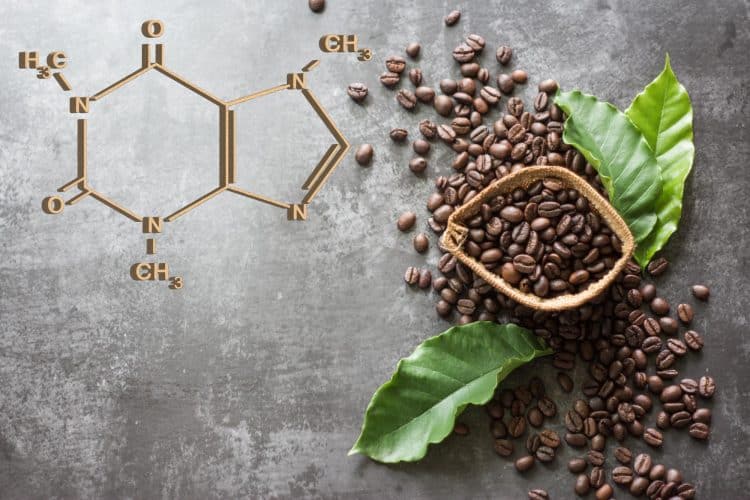
L-Carnitine
L-Carnitine is added to fat burners to increase fat oxidation. That’s because it has been shown to play a key role in transporting long-chain fatty acids into the cell’s mitochondria, where energy is produced. The body naturally produces carnitine, but it quickly depletes when exercising. Adding it to your fat burner will help to replenish your carnitine levels and speed up fat oxidation.
Look for a supplement that provides 1-3 grams of carnitine daily.
Green Tea
Green tea comes from the camellia sinensis plant. It is rich in polyphenols, including catechins and flavonoids. Catechins have been shown to be especially beneficial for fat loss, boosting the metabolism. The star among the catechins when it comes to fat burning is a compound called epigallocatechin gallate (EGCG). EGCG will boost your metabolism and work with L-carnitine to promote fat oxidation.
Green tea also gives you an energy boost. The ideal daily dosage of green tea for fat loss is 100 mg. Some products will individually list EGCG on the ingredient label. In that case, look for 500 mg.
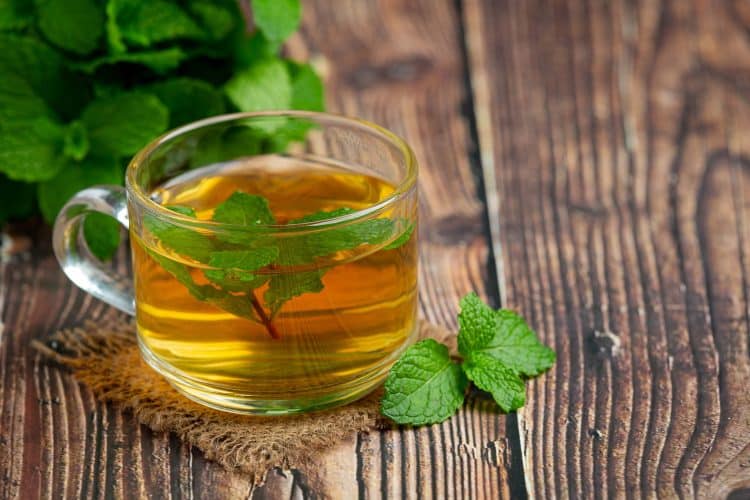
Capsicum
Capsicum contains a polyphenol known as capsaicinoids. This compound provides a hot and spicy flavor to hundreds of foods. It has been shown to have some pretty impressive fat-burning benefits. For one thing, capsaicinoids increase the core temperature of the body. Your body will then work overtime to bring the temperature back to a state of homeostasis. This takes up energy, which burns calories.
Capsaicinoids also break down adenosine triphosphate (ATP), the main form of energy in the body. It has also been shown to boost the body’s lipase production, which breaks down fat for energy.
Glucomannan
The roots of the konjac plant are used to make the dietary fiber glucomannan. It has an incredible capacity for water absorption, which transforms it into a thick, gel-like substance. It multiplies to many times its original size when ingested because it combines with bodily fluids. Your stomach has to make place for this, which causes you to feel full. In this manner, glucomannan aids in appetite suppression so that you consume fewer calories throughout the day and finish with a net calorie deficit.
In addition to making more room in your stomach, glucomannan also delays stomach emptying and lessens the absorption of fats and proteins. The recommended dosage is one gram taken three times daily.
Summary
This article provided a complete blueprint for losing belly fat over 50. You’ve been given the ideal balance of cardiovascular exercises to burn calories and resistance training to increase muscle mass and stoke your fat-burning furnace. At the same time, you’ve been given a wealth of nutrition and dietary tips to get you beyond the barriers to belly fat loss.
It’s now over to you to put all this belly fat-burning knowledge into action. Don’t let procrastination hold you back. Instead, resolve to start your workout program tomorrow, starting with the three weekly HIIT workouts and then adding in two circuit weight training sessions. Then, work through the 14 nutritional tips, incorporating one new tip daily into your routine over the next two weeks. Stay positive, remain consistent, and you will steadily lose that stubborn belly fat.
References
- Tchernof A, Després JP. Pathophysiology of human visceral obesity: an update. Physiol Rev. 2013 Jan;93(1):359-404. doi: 10.1152/physrev.00033.2011. PMID: 23303913.
- Palmer AK, Jensen MD. Metabolic changes in aging humans: current evidence and therapeutic strategies. J Clin Invest. 2022 Aug 15;132(16):e158451. doi: 10.1172/JCI158451. PMID: 35968789; PMCID: PMC9374375.
- Hunter GR, Singh H, Carter SJ, Bryan DR, Fisher G. Sarcopenia and Its Implications for Metabolic Health. J Obes. 2019 Mar 6;2019:8031705. doi: 10.1155/2019/8031705. PMID: 30956817; PMCID: PMC6431367.
- Van der Valk ES, Savas M, van Rossum EFC. Stress and Obesity: Are There More Susceptible Individuals? Curr Obes Rep. 2018 Jun;7(2):193-203. doi: 10.1007/s13679-018-0306-y. PMID: 29663153; PMCID: PMC5958156.
- Burton-Freeman B. Dietary fiber and energy regulation. J Nutr. 2000 Feb;130(2S Suppl):272S-275S. doi: 10.1093/jn/130.2.272S. PMID: 10721886.
- https://www.researchgate.net/publication/11892225_How_does_the_body_deal_with_energy_from_alcohol
- Zivkovic, Angela M, et al. “Dietary Omega-3 Fatty Acids Aid in the Modulation of Inflammation and Metabolic Health.” California Agriculture, U.S. National Library of Medicine, July 2011,
- Harris Jackson K, West SG, Vanden Heuvel JP, Jonnalagadda SS, Ross AB, Hill AM, Grieger JA, Lemieux SK, Kris-Etherton PM. Effects of whole and refined grains in a weight-loss diet on markers of metabolic syndrome in individuals with increased waist circumference: a randomized controlled-feeding trial. Am J Clin Nutr. 2014 Aug;100(2):577-86. doi: 10.3945/ajcn.113.078048. Epub 2014 Jun 18. PMID: 24944054; PMCID: PMC4095661.
- Stull, April J, et al. “Liquid and Solid Meal Replacement Products Differentially Affect Postprandial Appetite and Food Intake in Older Adults.” Journal of the American Dietetic Association, U.S. National Library of Medicine, July 2008
- Boschmann, Michael, et al. “Water-Induced Thermogenesis.” The Journal of Clinical Endocrinology and Metabolism, U.S. National Library of Medicine, Dec. 2003
- Dorfman, Suzanne E, et al. “Metabolic Implications of Dietary Trans-Fatty Acids.” Obesity (Silver Spring, Md.), U.S. National Library of Medicine, June 2009
- Assunção, Monica L, et al. “Effects of Dietary Coconut Oil on the Biochemical and Anthropometric Profiles of Women Presenting Abdominal Obesity.” Lipids, U.S. National Library of Medicine, July 2009
- Batterham, Rachel L, et al. “Critical Role for Peptide YY in Protein-Mediated Satiation and Body-Weight Regulation.” Cell Metabolism, U.S. National Library of Medicine, Sept. 2006
- Atakan MM, Li Y, Koşar ŞN, Turnagöl HH, Yan X. Evidence-Based Effects of High-Intensity Interval Training on Exercise Capacity and Health: A Review with Historical Perspective. Int J Environ Res Public Health. 2021 Jul 5;18(13):7201. doi: 10.3390/ijerph18137201. PMID: 34281138; PMCID: PMC8294064.
- Hansen RK, Samani A, Laessoe U, Handberg A, Mellergaard M, Figlewski K, Thijssen DHJ, Gliemann L, Larsen RG. Rowing exercise increases cardiorespiratory fitness and brachial artery diameter but not traditional cardiometabolic risk factors in spinal cord-injured humans. Eur J Appl Physiol. 2023 Jun;123(6):1241-1255. doi: 10.1007/s00421-023-05146-y. Epub 2023 Feb 13. PMID: 36781425; PMCID: PMC9924870.
- Willis LH, Slentz CA, Bateman LA, Shields AT, Piner LW, Bales CW, Houmard JA, Kraus WE. Effects of aerobic and/or resistance training on body mass and fat mass in overweight or obese adults. J Appl Physiol (1985). 2012 Dec 15;113(12):1831-7. doi: 10.1152/japplphysiol.01370.2011. Epub 2012 Sep 27. PMID: 23019316; PMCID: PMC3544497.

